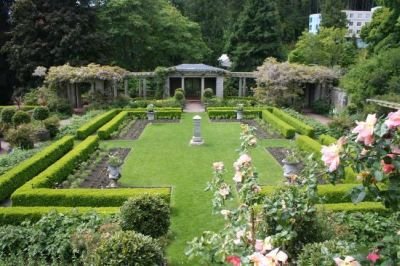Little Known Questions About Hilton Head Landscapes.
Some Known Questions About Hilton Head Landscapes.
Table of ContentsUnknown Facts About Hilton Head LandscapesHow Hilton Head Landscapes can Save You Time, Stress, and Money.6 Easy Facts About Hilton Head Landscapes ExplainedAll About Hilton Head LandscapesLittle Known Questions About Hilton Head Landscapes.Hilton Head Landscapes Can Be Fun For EveryoneGet This Report on Hilton Head Landscapes
Line produces all kinds and patterns and can be made use of in a selection of methods the landscape. Line in the landscape is developed by the side between 2 materials, the rundown or shape of a type, or a long straight feature. Lines are an effective tool for the designer due to the fact that they can be made use of to develop a boundless selection of shapes and types, and they control motion of the eye and the body.

Lines can have several qualities, such as those explained below, but they generally offer different purposes. Figure 1. Lines in the landscape - landscapers hilton head island. The residential or commercial properties of lines determine how people react to the landscape, both emotionally and literally. Straight lines are structural and forceful; they create an official character, are usually connected with a symmetrical layout, and lead the eye directly to a centerpiece.
How Hilton Head Landscapes can Save You Time, Stress, and Money.
Straight lines are frequently discovered in hardscape edges and product. Bent lines develop an informal, natural, kicked back personality that is connected a lot more with nature and unbalanced balance. Curved lines move the eye at a slower pace and add secret to the area by developing hidden sights. Vertical lines move the eye up, making a room feel larger.
Upright lines in the landscape include high, narrow plant product, such as trees, or tall frameworks, such as an arbor or a bird home on a pole. Horizontal lines relocate the eye along the ground airplane and can make a space really feel bigger. Low lines are much more suppressed and create a feeling of remainder or repose.
The Best Strategy To Use For Hilton Head Landscapes
Lines are likewise developed by the vertical forms of constructed functions and plant product. There are 3 primary line kinds that produce type in the landscape: bedlines, hardscape lines, and plant lines.
Bedlines connect plant material to your house and hardscape due to the fact that the eye adheres to the line, relocating the look through the landscape. Hardscape lines are created by the edge of the hardscape, which delineates the constructed structure. Line can also be produced by lengthy and slim materials, such as a fencing or wall surface.
Some Ideas on Hilton Head Landscapes You Need To Know
Kind is located in both hardscape and plants, and it is commonly the leading aesthetic element that spatially organizes the landscape and often identifies the style of the garden. The type of structures, plant beds, and garden accessories additionally figures out the total form theme of the garden. Formal, geometric kinds consist of circles, squares, and polygons.
Plants produce type in the garden through their outlines or silhouettes, but type can also be specified by a gap or adverse area in between plants - Landscaping bluffton sc (https://www.intensedebate.com/profiles/stevenagonzales). Circles can be cycles, or they can be separated right into fifty percent circles or you could try these out circle sections and combined with lines to produce arcs and tangents
The 9-Minute Rule for Hilton Head Landscapes
Circles can likewise be extended into ovals and ellipses for even more selection and rate of interest. Circles are a strong style form since the eye is constantly attracted to the center, which can be used to emphasize a centerpiece or attach other kinds. Number 2. Circular forms in hardscape and lawn panels.
The square form can additionally be fractional and used continuously to develop a grid pattern. Unlike circles, squares are stronger on the sides, which can be lined up or overlapped to develop unique patterns and more complex kinds.
Twisting lines commonly resemble the natural course of rivers or streams and can be called smooth lines with deeply curved undulations. Twisting lines (Number 3) function well for pathways, plant bedlines, and completely dry stream beds. Twisting lines can include rate of interest and mystery to a garden by leading visitors around corners to find new sights and rooms.
Some Known Factual Statements About Hilton Head Landscapes

Number 5. Fragmented sides: stepping stones in path. Form is one of the most enduring top quality of a plant (Landscapers near me). https://issuu.com/h1tnhdlndscps. Usual plant types are well developed and standard, as type is one of the most constant and identifiable attribute of plants. Type can also be developed through the massing of plants, where the general mass creates a various kind than a private plant.
An extremely different type needs to be used with careone or two work well as a focal point, yet way too many wreak havoc. Natural plant types, instead than over-trimmed types, need to develop the mass of the make-up. The importance of general type is essentially based on the viewing perspectivethe kind of a tree can appear quite various to an individual standing under the cover versus seeing the tree from a distance in an open area.
The Hilton Head Landscapes Diaries
Plant forms likewise produce and specify the gap or open rooms in between the plants, creating either convex or scooped types in deep spaces. High-arching tree branches commonly create a concave open space under the branches, and a rounded canopy with reduced branches fills the room to create a convex kind outdoors room under the tree.
